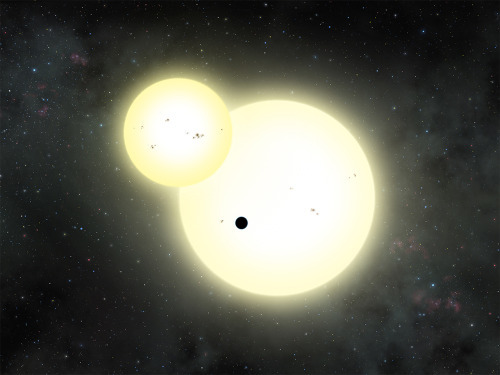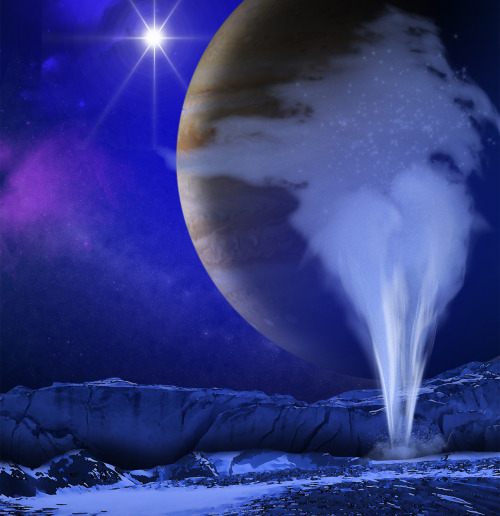Solar System: Things To Know This Week
Solar System: Things to Know This Week
From observing our moon to Saturn’s mini solar system …here are a few things you should know about our solar system this week:
1. What a Long, Strange—and Revealing—Trip It’s Been

As the Cassini mission builds toward its climactic “Grand Finale,” we’re taking a look back at the epic story of its journey among Saturn’s mini-solar system of rings and moons.
+ Traverse the timeline
2. Our Very Own Moon

Unlike Saturn, Earth has only one moon. Let’s celebrate it! International Observe the Moon Night (InOMN) is a worldwide, public celebration of lunar science and exploration held annually. On Oct. 8, everyone on Earth is invited to observe and learn about the moon together, and to celebrate the cultural and personal connections we all have with it.
+ Join in
3. What’s Up, October?

Even more about Earth’s moon is the subject of this month’s video guide for sky watchers and includes a look at the moon’s phases and when to observe them. Also featured are a guide to upcoming meteor showers and tips on how to catch a glimpse of Saturn.
+ Take a look
4. Nine Lives

Dawn’s discoveries continue, even as the asteroid belt mission marks nine years in space. “For such an overachiever,” writes Dawn’s top scientist, “it’s fitting that now, on its ninth anniversary, the spacecraft is engaged in activities entirely unimagined on its eighth.”
+ Learn more
5. The Incredible Shrinking Mercury

It’s small, it’s hot, and it’s shrinking. Research funded by us suggests that Mercury is contracting even today. This means we now know that Mercury joins Earth as a tectonically active planet.
+ Get the small details
Discover the full list of 10 things to know about our solar system this week HERE.
Make sure to follow us on Tumblr for your regular dose of space: http://nasa.tumblr.com
More Posts from Bigbluenasa and Others
Just another great training with educators using NASA Education resources for the classroom.

M8 M16 M17 And M20 Gems Of The Summer Milky Way by Martin Campbell on Flickr.
(via https://www.youtube.com/watch?v=wEHNfIUA6gM)

@nasajohnson NBL tour with #nasamei2017 on Monday. (at NASA Neutral Buoyancy Laboratory)
Ever been wowed by a NASA science visualization? Learn about their creation from NASA technical artist Kel Elkins. @NASAEPDC

Not to spoil the movie, because it & the book are awesome. This is just something you can learn about Mars before or after you watch the movie, “The Martian.”

NASA Gemini Mission Spacewalk. Famous shot. Note the hand held maneuvering gun
It’s May the 4th: Are Star Wars Planets Real?
Look at what we’ve found so far.
Is your favorite Star Wars planet a desert world or an ice planet or a jungle moon?
It’s possible that your favorite planet exists right here in our galaxy. Astronomers have found over 3,400 planets around other stars, called “exoplanets.”
Some of these alien worlds could be very similar to arid Tatooine, watery Scarif and even frozen Hoth, according to NASA scientists.
Find out if your planet exists in a galaxy far, far away or all around you. And May the Fourth be with you!
Planets With Two Suns

From Luke Skywalker’s home world Tatooine, you can stand in the orange glow of a double sunset. The same could said for Kepler-16b, a cold gas giant roughly the size of Saturn, that orbits two stars. Kepler-16b was the Kepler telescopes’s first discovery of a planet in a “circumbinary” orbit (that is, circling both stars, as opposed to just one, in a double star system).

The best part is that Tatooine aka Kepler-16b was just the first. It has family. A LOT of family. Half the stars in our galaxy are pairs, rather than single stars like our sun. If every star has at least one planet, that’s billions of worlds with two suns. Billions! Maybe waiting for life to be found on them.
Desert Worlds

Mars is a cold desert planet in our solar system, and we have plenty of examples of scorching hot planets in our galaxy (like Kepler-10b), which orbits its star in less than a day)! Scientists think that if there are other habitable planets in the galaxy, they’re more likely to be desert planets than ocean worlds. That’s because ocean worlds freeze when they’re too far from their star, or boil off their water if they’re too close, potentially making them unlivable. Perhaps, it’s not so weird that both Luke Skywalker and Rey grew up on planets that look a lot alike.
Ice Planets

An icy super-Earth named OGLE-200-BLG-390Lb reminded scientists so much of the frozen Rebel base they nicknamed it “Hoth,” after its frozen temperature of minus 364 degrees Fahrenheit. Another Hoth-like planet was discovered last month; an Earth-mass icy world orbiting its star at the same distance as Earth orbits the sun. But its star is so faint, the surface of OGLE-2016-BLG-1195Lb is probably colder than Pluto.

Forest worlds

Both the forest moon of Endor and Takodana, the home of Han Solo’s favorite cantina in “Force Awakens,” are green like our home planet. But astrobiologists think that plant life on other worlds could be red, black, or even rainbow-colored!
In February 2017, the Spitzer Space Telescope discovered seven Earth-sized planets in the same system, orbiting the tiny red star TRAPPIST-1.

The light from a red star, also known as an M dwarf, is dim and mostly in the infrared spectrum (as opposed to the visible spectrum we see with our sun). And that could mean plants with wildly different colors than what we’re used to seeing on Earth. Or, it could mean animals that see in the near-infrared.
What About Moons?
In Star Wars, Endor, the planet with the cute Ewoks, is actually a habitable moon of a gas giant. Now, we’re looking for life on the moons of our own gas giants. Saturn’s moon Enceladus or Jupiter’s moon Europa are ocean worlds that may well support life. Our Cassini spacecraft has explored the Saturn system and its moons. Watch the video and learn more about the missions’s findings.
And Beyond

The next few years will see the launch of a new generation of spacecraft to search for planets around other stars. TESS and the James Webb Telescope are slated to launch in 2018, and WFIRST in the mid-2020s. That’s one step closer to finding life.

You might want to take our ‘Star Wars: Fact or Fiction?’ quiz. Try it! Based on your score you may obtain the title of Padawan, Jedi Knight, or even Jedi Master!
You don’t need to visit a galaxy far, far away to find wondrous worlds. Just visit this one … there’s plenty to see.
Discover more about exoplanets here: https://exoplanets.nasa.gov/
Make sure to follow us on Tumblr for your regular dose of space: http://nasa.tumblr.com

Designing a NASA mission using the engineering design process is just part of a day's work for educators @nasajohnson attending our #nasamei2017 (at NASA - Johnson Space Center in Houston, TX)
(via https://www.youtube.com/watch?v=QMs7sWGm9q0)
-
 rusty7149 reblogged this · 6 years ago
rusty7149 reblogged this · 6 years ago -
 space-and-tecnology liked this · 8 years ago
space-and-tecnology liked this · 8 years ago -
 best-hotels-posts reblogged this · 8 years ago
best-hotels-posts reblogged this · 8 years ago -
 thefineststuff liked this · 8 years ago
thefineststuff liked this · 8 years ago -
 kennyyangcage reblogged this · 8 years ago
kennyyangcage reblogged this · 8 years ago -
 artsdrawingsandgamesold-blog liked this · 8 years ago
artsdrawingsandgamesold-blog liked this · 8 years ago -
 alicerobertstext reblogged this · 8 years ago
alicerobertstext reblogged this · 8 years ago -
 art2ducati reblogged this · 8 years ago
art2ducati reblogged this · 8 years ago -
 marcuscarnero liked this · 8 years ago
marcuscarnero liked this · 8 years ago -
 inkyshark reblogged this · 8 years ago
inkyshark reblogged this · 8 years ago -
 metalarmedsergeant liked this · 8 years ago
metalarmedsergeant liked this · 8 years ago -
 alienfrauds liked this · 8 years ago
alienfrauds liked this · 8 years ago -
 monhotpost liked this · 8 years ago
monhotpost liked this · 8 years ago -
 gluptuousvein liked this · 8 years ago
gluptuousvein liked this · 8 years ago -
 geometricgreen reblogged this · 8 years ago
geometricgreen reblogged this · 8 years ago -
 kirpicharro-blog liked this · 8 years ago
kirpicharro-blog liked this · 8 years ago -
 wboobw liked this · 8 years ago
wboobw liked this · 8 years ago -
 scarlettmom reblogged this · 8 years ago
scarlettmom reblogged this · 8 years ago -
 diverselygeek reblogged this · 8 years ago
diverselygeek reblogged this · 8 years ago -
 sidcam liked this · 8 years ago
sidcam liked this · 8 years ago -
 jerodi liked this · 8 years ago
jerodi liked this · 8 years ago -
 may-jasmine liked this · 8 years ago
may-jasmine liked this · 8 years ago -
 proton38 liked this · 8 years ago
proton38 liked this · 8 years ago -
 rjbailey reblogged this · 8 years ago
rjbailey reblogged this · 8 years ago -
 rjbailey liked this · 8 years ago
rjbailey liked this · 8 years ago -
 busserdinda reblogged this · 8 years ago
busserdinda reblogged this · 8 years ago -
 dindabusser liked this · 8 years ago
dindabusser liked this · 8 years ago -
 procrastinatingdraggun liked this · 8 years ago
procrastinatingdraggun liked this · 8 years ago -
 cosmicripple liked this · 8 years ago
cosmicripple liked this · 8 years ago -
 spock-soup reblogged this · 8 years ago
spock-soup reblogged this · 8 years ago -
 dopeboimagic-blog reblogged this · 8 years ago
dopeboimagic-blog reblogged this · 8 years ago -
 yyoshyy liked this · 8 years ago
yyoshyy liked this · 8 years ago -
 gfritz240 liked this · 8 years ago
gfritz240 liked this · 8 years ago -
 auruchka reblogged this · 8 years ago
auruchka reblogged this · 8 years ago